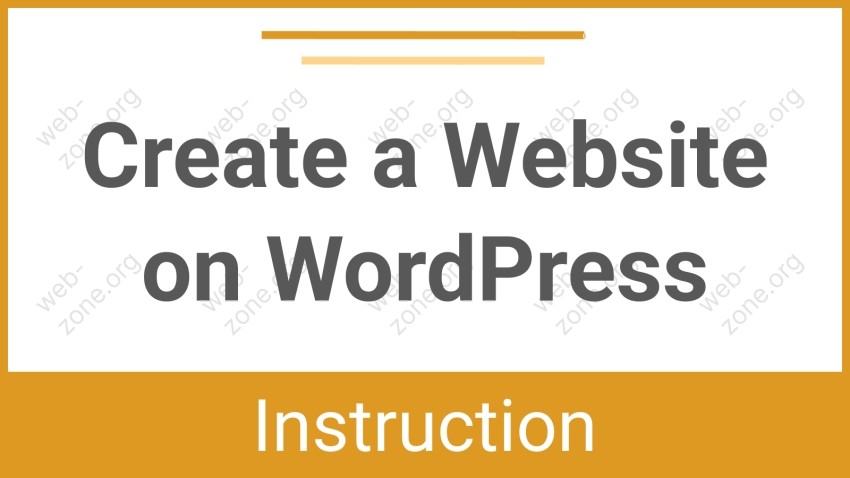
How to Build a WordPress Website: The Ultimate Step-by-Step Guide for Beginners
WordPress is one of the most widely used content management systems (CMS) in the world. Whether you’re creating a personal blog, a portfolio, or a full-scale online store, WordPress offers the flexibility and scalability you need.
“WordPress is both free and priceless at the same time.” – Matt Mullenweg, Co-founder of WordPress
1. Preparation
1.1 Choosing a Hosting Provider
Hosting is the foundation of your website. A reliable, fast, and secure host ensures smooth operation and better user experience.
What to look for:
- Type of Hosting: Start with shared hosting for small websites. For high-traffic projects, choose VPS or cloud hosting.
- WordPress Compatibility:
- PHP version 7.4 or later
- MySQL 5.7 or MariaDB 10.3+
- Apache mod_rewrite module (for SEO-friendly URLs)
- Auto Installer: Tools like Softaculous or Installatron simplify installation.
- Free SSL Certificate: Essential for security and SEO.
- Support: 24/7 customer service with English-speaking agents is ideal.
Popular Hosts:
- Bluehost, SiteGround, HostGator (international)
- DreamHost, A2 Hosting, InMotion Hosting (U.S.-based)
1.2 Registering a Domain Name
A domain is your digital address (e.g., mywebsite.com).
Steps:
- Brainstorm a name that matches your site’s purpose.
- Check availability using services like Namecheap or GoDaddy.
- Purchase and link it to your hosting account:
- Update the DNS records with your host’s nameservers.
- Propagation takes 15 minutes to 24 hours.
Tips:
- Keep it short, memorable, and brandable.
- Use .com for global appeal or .org/.net/.co if relevant.
- Consider setting up a professional email like admin@yourdomain.com
2. Installing WordPress
2.1 Manual Installation
Creating a Database (Manual Setup):
- Log in to your hosting panel (e.g., cPanel).
- Go to Databases – MySQL Databases.
- Create a new database.
- Create a database user and assign a strong password.
- Give the user full privileges.
- Save the following:
- Database name
- Username
- Password
- Host (usually localhost)
Installation:
- Download the latest version from wordpress.org.
- Unzip the files locally.
- Upload contents via FTP (FileZilla) or your host’s file manager to the public_html folder.
- Visit your domain to complete the installation wizard.
2.2 One-Click Installation
- Access your hosting control panel.
- Go to Softaculous – WordPress.
- Click Install Now.
- Fill in the form: domain, site title, admin login, etc.
- Select a theme or use the default.
- Finish setup and access – yourdomain.com/wp-admin.
3. Basic WordPress Settings
3.1 General Settings
- Site Title and Tagline
- WordPress Address (URL) and Site Address (URL)
- Admin Email
- Time Zone and Date Format
3.2 Permalinks
- Go to Settings – Permalinks
- Select Post name structure
3.3 Homepage Setup
- Create two pages: Home and Blog.
- Go to Settings – Reading.
- Select static front page: assign “Home” and “Blog” pages.
4. Installing a Theme
- Go to Appearance – Themes – Add New
- Search or filter themes
- Recommended:
- Airin Blog – is a Multipurpose, responsive, fast, minimal magazine theme for blogs and article sites, news and media, with many settings for all occasions
- Bado Blog – is a cool, modern multipurpose WordPress theme with many free settings to create a responsive, fast, SEO optimized website that is easy to modify with a visual customizer
- Click Install, then Activate
- Customize via Appearance → Customize
5. Installing and Configuring Plugins
5.1 How to Install Plugins
- Go to Plugins – Add New
- Search by name or keyword
- Click Install Now – Activate
5.2 Must-Have Plugins
- Elementor — page builder
- Yoast SEO or Rank Math — SEO tools
- WPForms or Contact Form 7
- UpdraftPlus — backups
- Wordfence or iThemes Security
- Autoptimize + WP Super Cache
- WooCommerce — eCommerce
“The right plugin can transform your WordPress site from a bicycle into a Ferrari. Use them wisely.”
6. Creating Website Structure
6.1 Essential Pages
- Home
- About
- Services or Products
- Contact
- Privacy Policy
6.2 Menus
- Go to Appearance – Menus
- Create and assign to location (e.g., header)
6.3 Widgets
Use Appearance – Widgets to manage sidebars and footers.
7. Security Basics
7.1 Protecting Your Login
- Use Limit Login Attempts Reloaded
- Hide login URL with WPS Hide Login
- Enable 2FA via Google Authenticator
7.2 Updates
- Keep WordPress, plugins, themes updated
- Enable auto-updates for trusted plugins
7.3 Backups
- Use UpdraftPlus
- Store backups in cloud (Google Drive, Dropbox)
7.4 SSL
- Activate SSL certificate via hosting
- Use Really Simple SSL if needed
“There are two types of websites: those that have been hacked, and those that will be. Secure yours now.”
8. SEO Optimization
8.1 SEO Plugin
- Install Yoast SEO or Rank Math
- Set titles, descriptions, sitemaps
8.2 URLs
- Use descriptive slugs (e.g., /about-us)
8.3 Content Optimization
- Use H1/H2 headings with keywords
- ALT text on images
- Unique and valuable content
- Connect to Google Analytics & Search Console
9. Conclusion
Your WordPress site is now fully set up and ready for the world.
You’ve learned how to:
- Choose hosting and a domain
- Install and configure WordPress
- Add themes, plugins, and pages
- Secure and optimize your site for SEO
“Don’t wait for the perfect website. Launch it, improve it, and grow.” – Neil Patel











